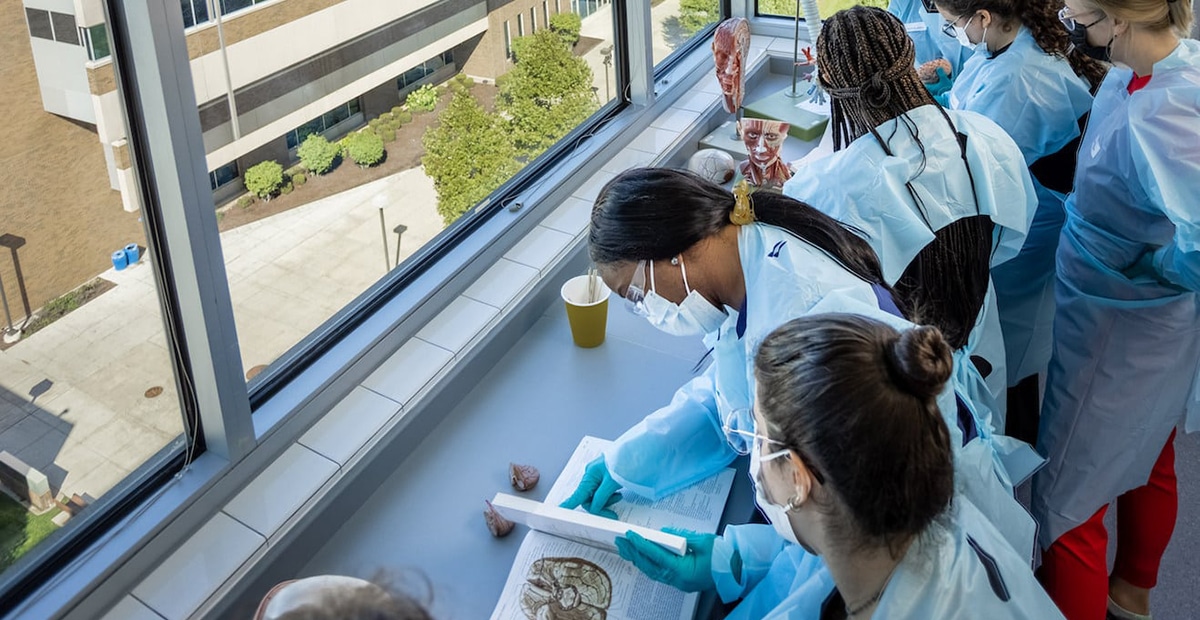

Five Bioscience and Healthcare Innovation Trends You Need to Know
Published: 04/18/2025
Updated: 04/29/2025
1. Clinical Trials and Product Validation
Access to a robust ecosystem of trusted healthcare providers and diverse patient populations is critical to validating new medical technologies. Reputable clinical partners help usher breakthroughs and advancements to the market in a timely fashion and establish product credibility — from wearables, like Fitbit’s cardiology applications validated at Mass General, to invasives, like Dexcom’s continuous glucose monitors laying the groundwork for their FDA approval at Scripps Health.
Patient populations that accurately represent a sample of the U.S. demographic makeup are also essential. In 2023, Arizona had the eighth-largest number of active, industry-sponsored clinical trials among all states despite being the 14th most populous due to the diverse, younger-than-average and fast-growing population paired with an established, expansive healthcare landscape, which includes Banner Health, Barrow Neurological Institute, Dignity Health, and Mayo Clinic. In the last five years, major players like AbbVie, Pfizer and Eli Lilly, and disruptors like Align Technology, have all completed trials in Greater Phoenix.
What this means: Greater Phoenix is a rising force in clinical research, delivering both patient access and institutional prowess.
2. Cell and Gene Therapy
Cell and Gene Therapy (CGTx) has been one of medicine’s breakout fields in recent years through technological advancements and regulatory approvals. However, there are challenges due to cost availability and scalability. Three major sources of these hurdles are a complex billing sequence, the labor-intensive, manual processing of blood samples, and the unbroken chain of cold storage that is necessary to retain specimen integrity. Greater Phoenix offers a geographically advantageous position to address these issues. In addition to being the 10th largest metropolitan area, the region is located within six hours of Tucson, Riverside, San Diego and LA, giving CGTx companies access to approximately 27 million people within a day’s roundtrip. This proximity has the potential to alleviate supply chain and cold storage issues in the field by providing easy access to the patient population.
Put simply: Greater Phoenix’s geography isn’t just convenient, it’s a strategic asset for scaling biomedical therapies.
3. MedTech and Biomanufacturing
Medtech and biomanufacturing are expected to scale rapidly in the next decade, with annual growth projections between 9%-13% across areas such as medicinal and pharmaceutical, diagnostic substance and biological products, medtech and medical devices, surgical and medical appliances and supply, and dental labs and ophthalmic goods manufacturing. Yet scaling to meet rising demands isn’t easy. Long lead times and out-of-state supply chains slow production and increase costs, putting pressure on manufacturers to find more efficient solutions.
Greater Phoenix is ready to meet the sector’s rising demand with long-term solutions. Over the past 10 years, the region jumped from the 30th- to the 14th-largest medtech job market in the nation. A major factor: its connection to the semiconductor industry. Nearly 90 percent of medtech and biomanufacturers in Greater Phoenix purchase materials from local suppliers in the semiconductor and printed circuit assembly sectors. By contrast, manufacturers in most other markets rely heavily on out-of-state vendors, adding delays, costs and risk.
In other words: As medtech races to scale, Greater Phoenix’s local supply chain is turning speed and proximity into a strategic advantage.
4. Medical Talent Retention
Retention of medical professionals has become a national concern across markets. The Association of American Medical Colleges projects the United States could face a shortage of 86,000 physicians by 2036 — a gap that could reduce patient access, strain care systems and accelerate physician burnout.
To address this, markets must not only train young medical talent but also retain it — and Greater Phoenix is doing both. From 2014 to 2024, Arizona increased its medical education capacity by 170 percent, the second-fastest growth rate in the country, behind only Utah. The impact of these efforts is measurable, with the state retaining 42.7 percent of its medical students and 48.7 percent of its residents in 2023, reinforcing the state’s long-term commitment to a robust healthcare workforce.
The bigger picture: As the physician shortage looms, Greater Phoenix is building a strong talent pipeline and keeping highly skilled labor in-state.
5. Impact of AI on the Industry
Artificial intelligence (AI) is already reshaping biomedicine and healthcare, with growing applications in areas such as clinical trials, diagnostics and risk assessment. In clinical trials, AI is being incorporated into patient recruitment and data analysis; in diagnostics, it helps doctors identify diseases faster and at earlier stages; and in risk assessment, it has the potential to improve accuracy.
While AI holds the potential to significantly improve outcomes and efficiency across the system, drawbacks remain — including the potential for bias, discrimination and misinformation. However, using AI as an assistive technology has the potential to revolutionize medicine and patient care. Greater Phoenix is on the cutting edge of this technology. Higher education institutions have adapted and invested quickly: Arizona State University has partnered with OpenAI, and Maricopa Community Colleges offer associate degrees in AI to help build a highly skilled workforce capable of meeting growing application demand across sectors. The region also hosts a rapidly expanding network of next-generation data centers, providing the infrastructure needed to support AI-driven healthcare solutions.
The takeaway: Greater Phoenix isn’t just embracing the promise of AI — it’s actively investing in the people, partnerships and infrastructure required to lead its integration into modern medicine.
Photo credit: Midwestern.edu